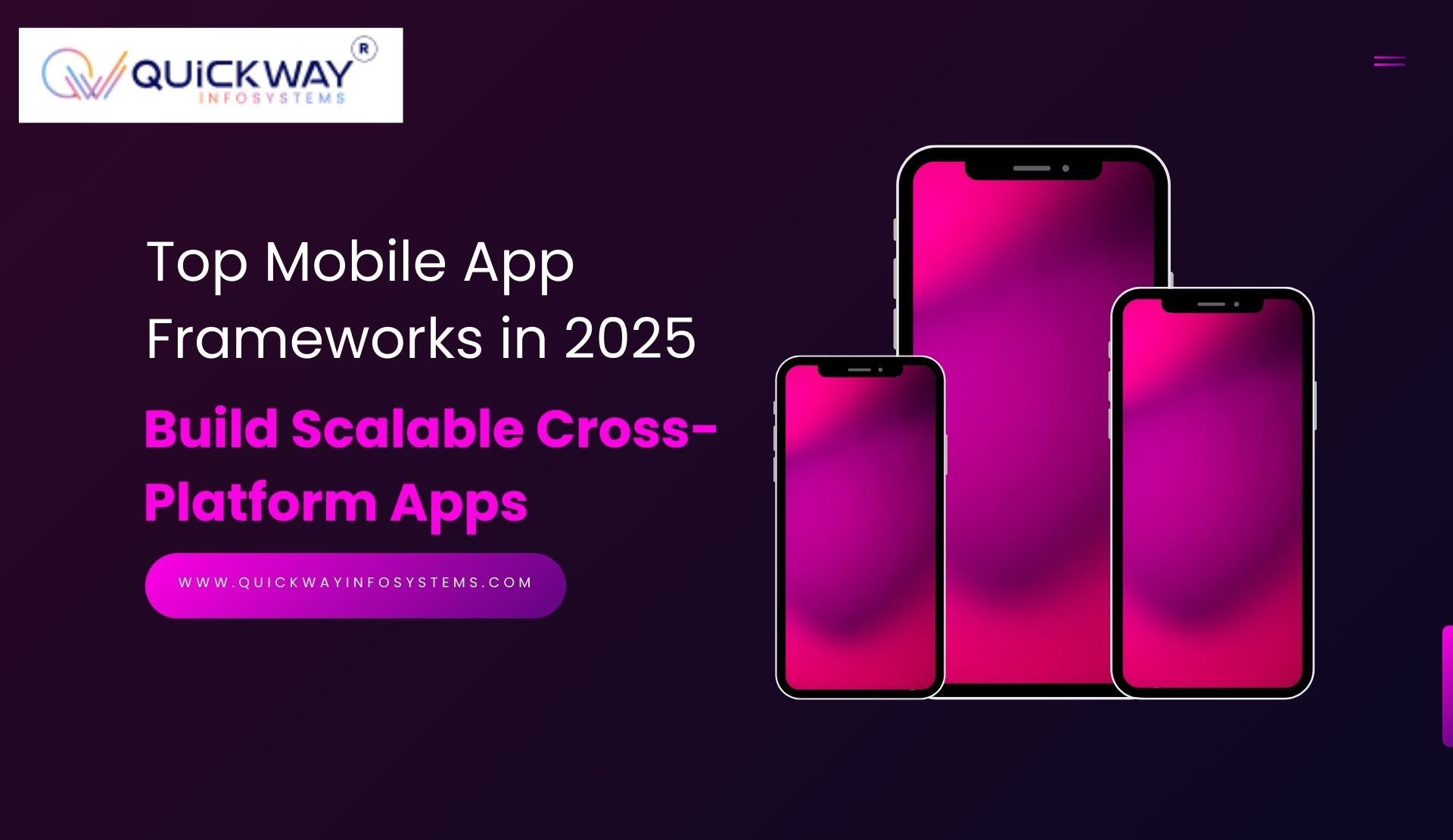
In 2025, mobile app development continues to be a driving force behind digital innovation, with businesses relying on robust mobile solutions to connect with users across platforms. To meet the growing demand for efficient and scalable applications, developers are turning to advanced mobile app frameworks that support the creation of high-performance cross-platform apps. These frameworks reduce development time, lower costs, and ensure consistent user experiences across iOS and Android devices.
Here’s a look at the top mobile app frameworks in 2025 that are helping developers build scalable, responsive, and feature-rich cross-platform apps.
1. Flutter
Flutter, backed by Google, remains one of the most popular mobile app frameworks in 2025. It allows developers to create natively compiled applications for mobile, web, and desktop using a single codebase.
Key Features:
-
Fast development with hot reload.
-
Rich set of pre-built widgets.
-
Excellent UI consistency across platforms.
-
Strong community support and frequent updates.
Flutter is ideal for creating cross-platform apps with visually appealing and customized interfaces. Its performance is close to native, making it a go-to choice for startups and enterprises alike.
2. React Native
Developed by Meta (formerly Facebook), React Native continues to dominate as a flexible framework for cross-platform app development. It uses JavaScript and React to build apps that look and feel like native applications.
Key Features:
-
Reusable components across platforms.
-
Integration with native modules.
-
Large developer community.
-
Real-time reload for faster development cycles.
React Native excels in building complex mobile applications that require a high level of interactivity and user engagement.
3. Xamarin
Xamarin, a Microsoft-owned framework, allows developers to build cross-platform apps using C# and .NET. Its ability to share nearly 90% of code across platforms makes it a strong contender for enterprise applications.
Key Features:
-
Integration with Microsoft Azure and Visual Studio.
-
Native performance with Xamarin.Forms.
-
Extensive .NET ecosystem support.
-
Strong backend integration for scalable apps.
With Xamarin, developers can easily maintain and scale applications for both Android and iOS, making it ideal for long-term enterprise solutions.
4. Kotlin Multiplatform Mobile (KMM)
Kotlin Multiplatform Mobile is gaining traction in 2025 as a framework for sharing business logic code across iOS and Android platforms. While it doesn’t replace native UI development, it significantly reduces code duplication.
Key Features:
-
Shared logic and libraries for both platforms.
-
First-class support by JetBrains and Google.
-
Compatible with existing native codebases.
-
High-level performance and scalability.
KMM is best suited for teams already using Kotlin and looking to optimize their cross-platform development workflows.
5. SwiftUI + Jetpack Compose (Hybrid Native Approach)
While not traditional cross-platform app frameworks, SwiftUI (Apple) and Jetpack Compose (Android) are used together by modern development teams to build consistent interfaces and user experiences on both platforms.
Key Features:
-
Declarative UI development.
-
Smooth animations and UI transitions.
-
Fast prototyping and development cycles.
-
Modern syntax and architecture.
This hybrid-native approach is ideal for teams that want to maintain platform-specific experiences while reducing design and logic inconsistencies.
6. Apache Cordova (PhoneGap)
Apache Cordova is still relevant for simple hybrid applications that require rapid prototyping and deployment. It allows developers to build mobile apps using web technologies like HTML, CSS, and JavaScript.
Key Features:
-
Lightweight framework.
-
Access to native device APIs via plugins.
-
Low entry barrier for web developers.
-
Fast deployment and testing.
Though it’s not ideal for performance-heavy apps, Cordova is effective for smaller-scale cross-platform apps that don’t require complex native integrations.
Choosing the Right Mobile App Framework
When selecting from the top mobile app frameworks, businesses and developers must consider several key factors:
-
Project complexity: More complex apps may benefit from React Native or Flutter.
-
Performance needs: Xamarin and Kotlin Multiplatform Mobile offer near-native performance.
-
Development team expertise: Choose frameworks aligned with your team’s language proficiency (e.g., JavaScript, Dart, C#, Kotlin).
-
Time-to-market: Frameworks with reusable components and hot reload features accelerate development.
Final Thoughts
In 2025, the landscape of mobile app frameworks is rich with options tailored to a variety of development needs. Whether you’re a startup building an MVP or an enterprise scaling up your digital strategy, the right framework can significantly impact your app’s success.
Cross-platform apps are no longer a compromise—they offer competitive performance, cost efficiency, and a broader reach. By leveraging modern frameworks like Flutter, React Native, Xamarin, and Kotlin Multiplatform Mobile, developers can build scalable apps that perform beautifully on any device.
As technology evolves, staying updated with the best tools in the ecosystem ensures you’re always ahead of the curve in mobile app development.